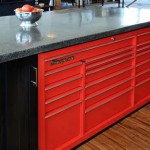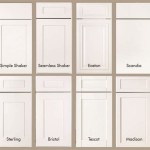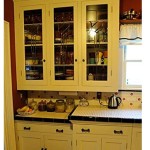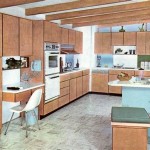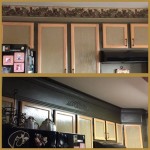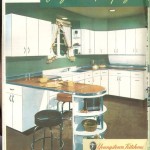Kitchen Cabinet Definition and Examples
Kitchen cabinets are a fundamental component of kitchen design, serving both a functional and aesthetic purpose. Their primary function is to provide storage space for cookware, dishes, food supplies, and other kitchen essentials. Beyond their practical utility, kitchen cabinets significantly contribute to the overall style and visual appeal of the kitchen, influencing the atmosphere and complementing the architectural design of the home.
The term "kitchen cabinet" encompasses a broad range of storage units, each serving a specific purpose and contributing to the overall organization and efficiency of the kitchen workspace. These units can be categorized based on their location, construction, and style, with each type offering unique advantages regarding storage capacity, accessibility, and visual appeal. Understanding the different aspects of kitchen cabinets is important in planning a kitchen remodel or new construction project.
Types of Kitchen Cabinets Based on Location
Kitchen cabinets can be broadly classified based on their placement within the kitchen space. The three primary categories are base cabinets, wall cabinets, and tall cabinets. Each type is designed to maximize storage capacity in different areas of the kitchen.
Base Cabinets: These cabinets are the foundation of kitchen storage, positioned directly on the floor and supporting the countertop. Base cabinets are typically 34.5 inches high, providing a standard working surface. They house a variety of features, including drawers, shelves, and pull-out organizers. Standard depths commonly range from 24 to 27 inches, allowing for ample counter space and ample storage for large items like pots, pans, and small appliances. Base cabinets are essential for supporting the countertop and appliances, making them a critical component of the kitchen design.
Wall Cabinets: These cabinets are mounted on the wall, typically above the base cabinets and countertops. Wall cabinets are designed to store dishes, glasses, and smaller kitchen tools. Their heights vary, ranging from 30 to 42 inches, depending on the ceiling height and desired storage capacity. Standard depths are generally between 12 and 14 inches. The distance between the countertop and the bottom of the wall cabinets is normally about 18 inches, which provides sufficient workspace. Wall cabinets are important for optimizing vertical space and keeping frequently used items within easy reach. Glass-fronted wall cabinets can also be used to display decorative items, adding visual interest to the kitchen.
Tall Cabinets: These full-height cabinets offer extensive storage space and are often used for pantries, utility closets, or appliance garages. Tall cabinets can range from 84 to 96 inches in height, extending from the floor to near the ceiling. These cabinets are ideal for storing bulk food items, cleaning supplies, or even built-in appliances, such as ovens or refrigerators. Tall cabinets provide a streamlined look and maximize vertical storage, making them a valuable addition to kitchens with limited floor space. They can also be customized with pull-out shelves, adjustable shelving, and specialized organizers to enhance accessibility and organization.
Construction and Materials of Kitchen Cabinets
The durability and aesthetic appearance of kitchen cabinets largely depend on the materials used in their construction. The primary components of a cabinet are the cabinet box, the cabinet door, and the hardware. Each of these elements can be constructed from various materials, impacting the overall quality and longevity of the cabinets.
Cabinet Box Materials: The cabinet box forms the structural foundation of the cabinet and is typically constructed from plywood, particleboard, or medium-density fiberboard (MDF). Plywood offers excellent strength and moisture resistance, making it a premium choice. Particleboard, while more affordable, is less resistant to moisture and may not be as durable as plywood. MDF is a composite material that provides a smooth surface for painting or laminating. The choice of cabinet box material depends on budget considerations and the desired level of durability.
Cabinet Door Materials: The cabinet door is the most visually prominent part of the cabinet and is typically made from solid wood, wood veneer, laminate, or thermofoil. Solid wood offers a classic and timeless look, with options such as oak, maple, cherry, and walnut providing different grain patterns and finishes. Wood veneer consists of a thin layer of real wood applied over a substrate, offering a similar appearance to solid wood at a lower cost. Laminate and thermofoil are synthetic materials that provide a durable and easy-to-clean surface, available in a wide range of colors and patterns. The material choice for cabinet doors affects both the appearance and the maintenance requirements of the kitchen cabinets.
Cabinet Hardware: Cabinet hardware includes hinges, knobs, pulls, and drawer slides. These components are crucial for the functionality and durability of the cabinets. High-quality hinges ensure smooth door operation, while sturdy drawer slides allow for easy access to stored items. Knobs and pulls add a decorative touch and can significantly impact the overall style of the kitchen. The selection of cabinet hardware should consider both aesthetics and functionality, ensuring that the hardware complements the cabinet design and withstands daily use.
Styles and Design Elements of Kitchen Cabinets
Kitchen cabinets contribute significantly to the overall aesthetic of the kitchen, with different styles and design elements influencing the room's atmosphere. The cabinet style, door design, and finish color all play a role in creating the desired look and feel.
Cabinet Styles: Common kitchen cabinet styles include traditional, contemporary, transitional, and farmhouse. Traditional cabinets often feature ornate details, raised panel doors, and rich wood finishes, creating a formal and elegant look. Contemporary cabinets typically have sleek lines, minimalist designs, and flat panel doors, often using materials like stainless steel or glass. Transitional cabinets blend elements of traditional and contemporary styles, offering a balanced and versatile look. Farmhouse cabinets often incorporate rustic elements, such as shiplap panels, distressed finishes, and apron-front sinks, creating a warm and inviting atmosphere. The chosen cabinet style should complement the overall design of the home and reflect the homeowner's personal preferences.
Door Designs: Cabinet door designs vary widely, with options including raised panel, flat panel, Shaker, and glass-front doors. Raised panel doors feature a raised center panel, adding depth and dimension to the cabinet. Flat panel doors offer a simple and clean look, ideal for contemporary designs. Shaker doors have a recessed center panel surrounded by a simple frame, providing a timeless and versatile style. Glass-front doors allow for the display of dishes and decorative items, adding visual interest to the kitchen. The door design should complement the cabinet style and contribute to the overall aesthetic of the kitchen.
Finish Colors and Materials: The finish color of kitchen cabinets can significantly impact the overall look and feel of the kitchen. White cabinets are a classic choice, creating a bright and airy atmosphere. Gray cabinets offer a modern and sophisticated look, while natural wood finishes provide warmth and texture. Painted cabinets can be customized in a wide range of colors, allowing for personalization and coordination with other kitchen elements. The chosen finish color should complement the overall color scheme of the kitchen and reflect the desired style and atmosphere.
The countertop material and design must be considered along with the cabinets. Materials for countertops include granite, quartz, marble and laminates. The aesthetic of the countertop should work with the cabinet color, door style, and hardware.
Kitchen cabinets are an essential component of any kitchen design. By understanding the different types of cabinets, construction materials, and styles available, homeowners can make informed decisions to create a functional and attractive kitchen space.

Cabinetry Terms With Pictures A Guide To Understanding Kitchens

Cabinetry Terms With Pictures A Guide To Understanding Kitchens

Cabinetry Terms With Pictures A Guide To Understanding Kitchens

What Is Base Cabinet Definition Of

Cabinetry Terms With Pictures A Guide To Understanding Kitchens

Kitchen Cabinet Wikipedia

Kitchen Cabinet Political Dictionary

What Is Modular Cabinet Definition Of

What Are Shaker Style Cabinets All You Need To Know Cc

Kitchen Furniture 10 Best Tools And Visual Dictionary

